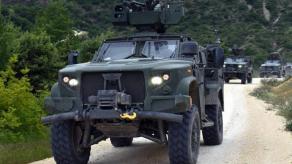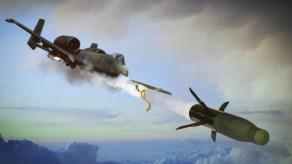Missile strike on the naval base of the russian Black Sea Fleet in the occupied Sevastopol was remarkably resultative: two military ships at once were put out of order for a long time or destroyed altogether – the Minsk dock landing ship and the Rostov Na Donu missile submarine.
While the hit on a landing ship occurs for the third time since the war broke out in Ukraine, a submarine appears among the casualties for the first time and already stands out. Furthermore, it is generally a unique situation in world military history because Ukraine, as a matter of fact, has no specialized anti-submarine weapons.
Read more: Ukraine Finds Success in Missile Attack on Sevastopol and Hints on the Weapon Used to Take Down a Huge russian Landing Ship and Submarine

A submarine as a class of naval watercraft is a highly difficult target, it requires an entire variety of countermeasures to deter one, including anti-submarine boats, aircraft or helicopters, or own submarines. Ukraine, on the other hand, has none of that.
No modern warships to patrol the waters in a search-and-destroy mission, no P-8 Poseidon anti-submarine aircraft with its acoustic sensors and sonobuoys or at least P-3 Orion aircraft with its magnetic anomaly detector. And of course, Ukraine has no underwater naval ships of its own.

Even if russians wouldn't practically make their submarines fire cruise missiles from the roadstead, read: on the doorstep of their own naval bases, and sometimes let them go into the open sea, Ukrainian Armed Forces had absolutely no means to attack them.
That is, surely, except for the only option – strike the submarines down while they stay in a dry dock. Given that diesel-electric submarines leave for a combat mission submerged and stay like that all the time, for the snorkel was invented back during the WW2 times, the only opening for an attack is when the submarine is still in the bay.
Precisely that was done by Ukrainian Air Force pilots, and it became the first time cruise missiles were used against submarines, especially a resultative one. At the same time, it's already recurring that the Armed Forces of Ukraine carve a place in the history of naval warfare – previously, the Ukrainian forces destroyed and sunk the flagship of the Black Sea Fleet, the Moskva missile cruiser, that's one thing. Secondly, they effectively used maritime suicide drones for attacks on russian ships and bases.

That aside, the missile attack of September 13th managed to damage and most likely put the Rostov Na Donu landing ship out of order. The assumption is based not as much on the scale of the fire that broke out and was testified by photos online as on the design of the Storm Shadow cruise missile, most likely used for this strike.
Storm Shadow, also known as SCALP, has a 450-kg tandem warhead that consists of two parts. The leading one is a focused explosive charge that breaks a hole in the obstacle, then the second, HE-FRAG charge enters the breach.
This way, the main explosion occurs inside the hull of the ship that gets hit by such a missile. It leads to critical damage at minimum. The massive fire that broke up at the naval base and engulfed both warships multiplied the damage because a ship in this case burns inside out and bulkheads melt.
For example, after the fire on American USS Bonhomme Richard amphibious assault ship, the vessel remained afloat but nevertheless was decommissioned. The time needed for repairs was estimated at 7 years, and the cost at USD 2.5 to 3.2 mln.
Read more: Ukraine Has So Many Kamikaze Boats That a Specialized Brigade Was Created in the Ukrainian Navy














